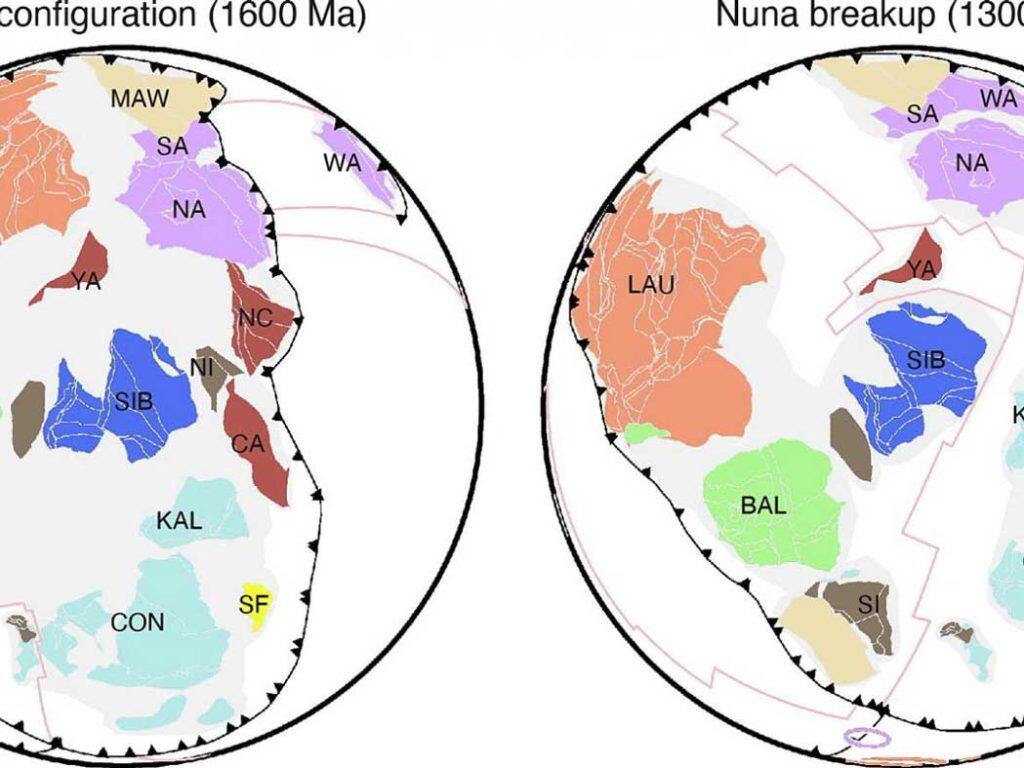New research featuring University of Adelaide academics has provided a better understanding of how Earth’s tectonic plates evolved over the past 1.8 billion years.
The findings, published in Geoscience Frontiers , are the first rock-based full tectonic reconstruction of 40 per cent of Earth’s history, disproving thoughts that there was a time of little activity.
“This reconstruction goes from today back through three supercontinents – Pangea, Rodinia and Nuna/Columbia and takes our reconstruction of the shape of the planet back in time to when many of the mineral deposits of Australia were formed and also back to when the earliest complex cells evolved,” said Professor Alan Collins, Douglas Mawson Professor of Earth Sciences at the University of Adelaide.
“We can’t test hypotheses of how life on Earth evolved, how critical metal deposits formed, or even how our planet has so much oxygen in its atmosphere without understanding how plate tectonics works over the planet’s history.
“Plate tectonics is a uniquely Earth feature and allows the elements within the planet to get to the surface where they can be used as essential nutrients and later recycled and concentrated into ore deposits which we can use to make electric vehicles and mobile phones.
“In a very real way, life on Earth looks like it does because of plate tectonics.
“So, to understand how this works, we need to model the Earth and we can only do this by using the evidence preserved in rocks all over the world to build these full plate tectonics models of the planet.”


Professor Collins said the model provides an updated timeline for Nuna (the first supercontinent), which was formed 1.6 billion years ago when West Nuna, East Nuna and South Nuna assembled.
It then broke up between 1.4 and 1.3 billion years ago, with the separated continents coming back together to form Rodinia around 930 million years ago.
“Despite the recent advances in modelling continental movement and plate boundary evolution, the construction of a continuous tectonic model, constrained by geological and high-quality paleomagnetic data and connecting the Phanerozoic and Mesoproterozoic geologic eons, encompassing all three well-known supercontinents (Nuna, Rodinia, Pangea), has remained elusive,” said Professor Collins.
“Our model is a snapshot and a means of presenting and focusing geological questions.
“We have produced a new tectonic framework for analysing the long-term evolution of Earth systems, providing a basis for developing future analysis of tectonic controls on deep Earth resources and developing planetary hypsographic reconstructions that can inform lithosphere/earth surface systems feedback.
“Contrary to the concept of a ‘boring billion’, our model reveals a dynamic geological history between 1.8 giga annum (billion years) and 0.8 giga annum, characterised by supercontinent assembly and breakup, and continuous accretion events.”
Professor Collins said the findings form the starting point for his Australian Research Council Laureate Fellowship he was awarded earlier this year, with the team set to add mountains and ocean depths to the reconstructions to model how the deepest parts of Earth controlled most of the surface systems.







































